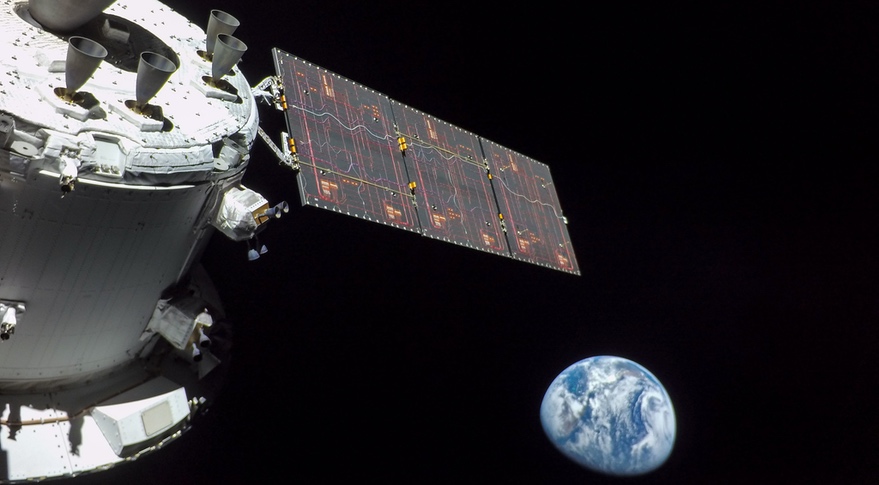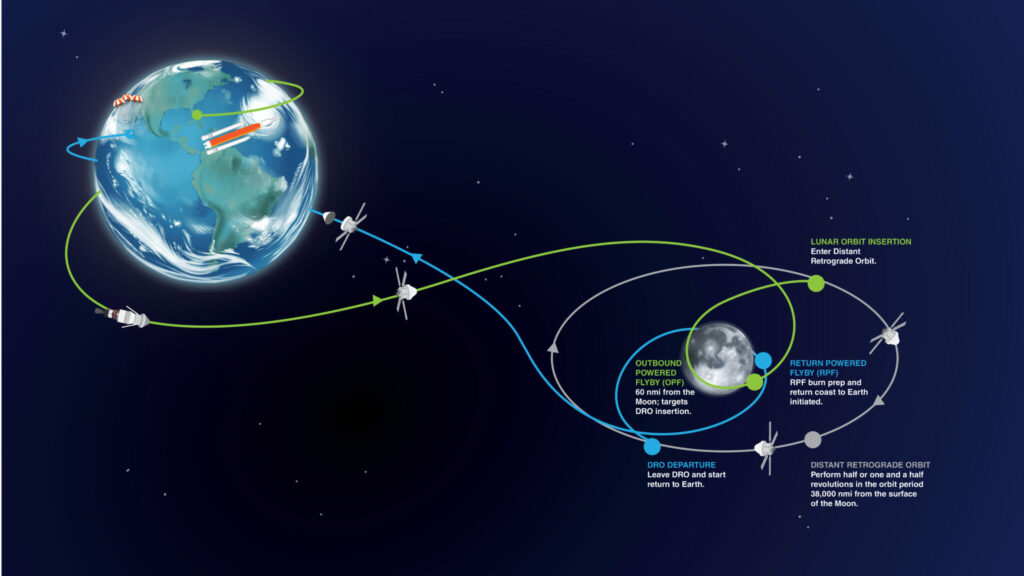On November 21, the Orion spacecraft will fly around the Moon. This event will be broadcast live by NASA.

Orion was launched on November 16 as part of the Artemis I mission. Its main task is to comprehensively test all systems of the new spacecraft and the superheavy SLS rocket. The success of the test will pave the way for manned flights, during which four astronauts will fly around the Moon (Artemis II mission), and then land at the South Pole of the moon (Artemis III mission).
Live broadcast of the Moon flyby
On November 20, Orion entered the sphere of lunar influence — a region where the gravity of the Moon has a greater influence on it than the gravity of our planet. On November 21, the spacecraft will have to fly around the moon. Orion will pass at a distance of only 130 km from its surface. At the moment when Orion will be above its reverse side, it will activate its main engine. This maneuver will allow transferring the spacecraft to a distant retrograde orbit (DRO) around the Moon.
The upcoming Moon flyby will be demonstrated by NASA live on its YouTube channel. The broadcast will begin at 12:15 p.m. GMT+2 (10:15 a.m. World time). At 02:25, the spacecraft will disappear behind the far side of the moon. At 02:44 p.m. Orion will have to activate its engine. The planned duration of the maneuver is 2.5 minutes. How the engine was turned on and whether it was possible to direct the spacecraft to the DRO would become clear at 02:59 p.m., when it would again be in the visibility zone of the MCC.
Further Orion flight plan
If the moon flyby is successful, Orion will reach DRO on November 25. It lies at a considerable distance from the lunar surface — at the apogee, the spacecraft will move away from the moon of our planet by 70 thousand km, while moving in the direction opposite to the direction of movement of the Moon around the Earth. Mission specialists chose this orbit because of its stability. The spacecraft located on it are “balanced” by the gravitational pull of the Earth and the Moon, which reduces fuel consumption.

Orion will spend six days on the DRO. During this time, NASA engineers will monitor the behavior of the device and test its systems. Then the spacecraft will perform several maneuvers that will take it away from the DRO and send it back to our planet. Its capsule will have to return to Earth on December 11.
Follow us on Twitter to get the most interesting space news in time
https://twitter.com/ust_magazine

